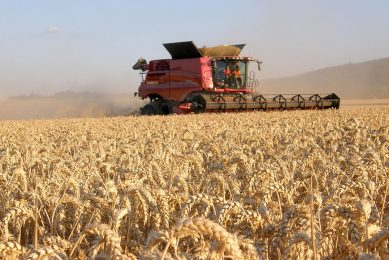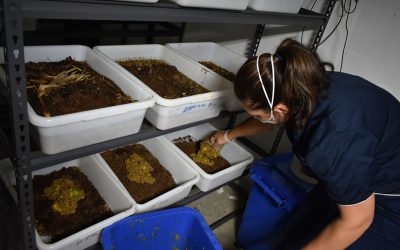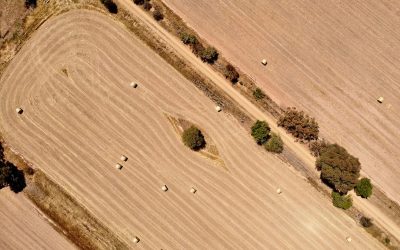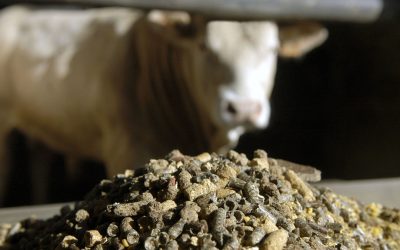The future of aquaculture
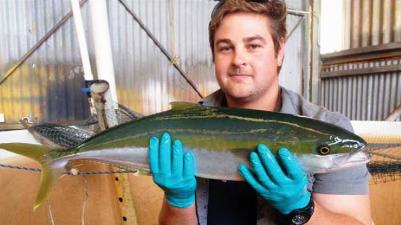
What sort of future does aquaculture have? What sort of future does any food producing industry have for that matter? The recent E-coli outbreak in Europe must be scaring food producers witless worldwide. But there are other issues. Agricultural chemicals are also impacting on seafood production, particularly at a hatchery level.
| Rowan Kleindienst of Indian Ocean Fresh Australia displays a yellowtail kingfish. The fish were put into a sea cage off the coast of Geraldton, WA. At maturity, the fish will be sent to markets across Australia.Rowan Kleindienst of Indian Ocean Fresh Australia displays a yellowtail kingfish. The fish were put into a sea cage off the coast of Geraldton, WA. At maturity, the fish will be sent to markets across Australia. |
Fish and seafood are grown in water: the repository and incubator of so many dangerous diseases. And as sure as water runs downhill contaminants always finish up in a river system somewhere. Probably around half of the finfish production, think trout, tilapia and carp, is in freshwater. Flow-through systems are vulnerable to outside contamination and static systems are vulnerable to introduced manure used to trigger plankton blooms and any build up of faeces not managed by the system’s natural biological mechanisms. In some countries livestock pens are built over fish farms so their droppings can trigger plankton blooms. In the case of recirculation systems the build up of faeces beyond the system’s neutralising capacity is a major limiting factor; probably the underlying one.
As we descend from peak oil production, the availability and cost of petroleum-based inputs will impact on fertiliser decisions in every food producing sector. The obvious fallback position is animal manures. What I’ve read on the E-coli outbreak at first suggested that manure from ruminants was the most likely source of the outbreak. Is it beginning to look like we’re back where we started?
Now consider the increasingly urgent race to manufacture digestible aquaculture feed ingredients from phyto and zooplankton. The most likely, and by far the most cost effective is animal manure. And the most cost effective animal manures will come from the intensive animal protein production sectors. The pig and poultry sectors would head the list by volume, but barn manure is ideal for some of the species targeted for zooplankton production: daphnia for instance.
Agrochemical threat
But it’s not only bacterial and viral pathogens that threaten feed output. The overuse of agricultural chemicals is also insidiously compromising the environment. The recent deformities suspected to be associated with overspray from a neighbouring orchard on the Sunland Fish Hatchery at Cootharaba made world headlines. That the authorities have turned a blind eye to the events only exasperates those involved in the battle to achieve an open and straightforward review of the available evidence, not to mention the added risk to humanity.
To ignore the saltwater-based systems in any overview of this threat would be the heart of folly. Water flows downhill until it reaches the ultimate sump – the lakes, seas and oceans that make up 7/10thsof our planet’s surface where it plays a fundamental role in our climate – as a thermostat, a carbon sink and as an oxygen producer. Already the above event, which is in a land-based agricultural region, is impacting on marine species to breed. According to the UN, we’re due to welcome the seven billionth person onto the globe this year. It’s taken us 12 years to add the previous billion. How long will it take to add the next billion? The bottom line as I see it is that the real threat to feeding the world’s population is not so much from global warming – trying to turn that back would be like trying to turn the tide back – as it is from how we interpret the science and develop those interpretations into a holistic plan. A plan taking into consideration the total environmental web upon which we depend and certainly not one driven by the market.
If anyone can tell me the difference between the market and the political industry, I’d be only too happy to have them explain it to me. Make no mistake, if the market is driving our response to the changing conditions on our planet, it will be to its advantage first and foremost. And you can bet your bottom drachma that it will be a short-term advantage. The market sees population growth as a bigger market to feed off. We in the food producing industry, struggling with so many variables and unknowns, see it as another billion mouths to feed. Something has to give.




